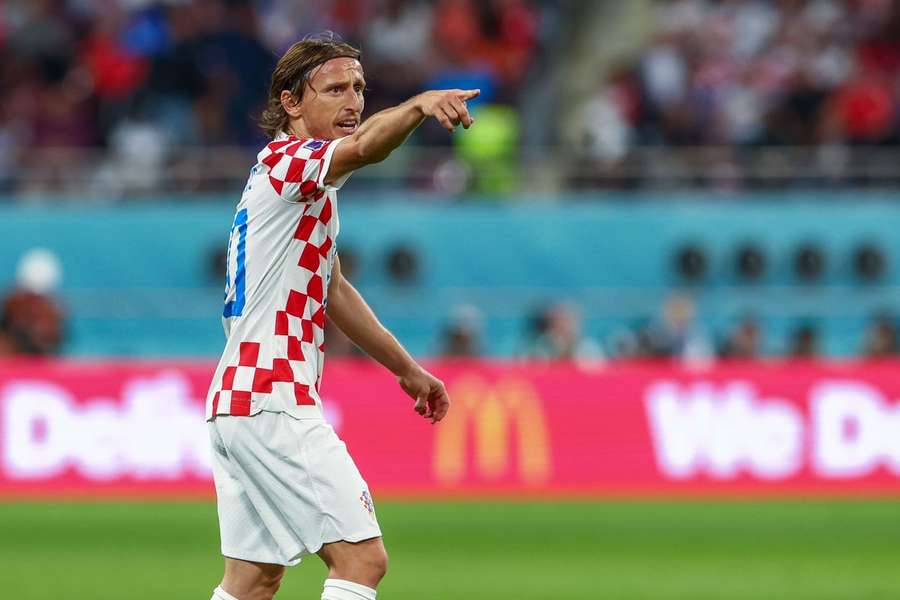11Hacks Data Analysis: Belgium must stop Modric to beat defensively strong Croatia

Canada had seven shots during the rest of the match, but all of them were aimed at Dominik Livakovic's goal from outside the area, and he only had to save one of them. The rest were either blocked by the defence or missed the target. In total, the Canadians accumulated an xG of 0.35.
On the other side of the pitch, the creativity was, as usual, mainly provided by Luka Modric, Mateo Kovacic and Ivan Perisic on the wing. They created nine opportunities for their team mates.
Andrej Kramaric was most often on the receiving end of these actions. The Hoffenheim forward recorded five shots, two of which he converted. Marko Livaja of Hajduk Split added three more shots and one goal. All in all, 13 shots, nine in the penalty area and a total xG of 2.70.
Everything that happens on the pitch has a common denominator in the Croatian team. Luka Modric. He is the one who connects his midfield with the defence and offence, while also handling both offensive and defensive duties with great ease. The Real Madrid midfielder is playing with an energy at the tournament that is unprecedented for a 37-year-old footballer.
Among central midfielders who have played at least 100 minutes at the World Cup, Modric maintains the second highest number of defensive tackles. On average, he has 13.7 per game. Only FC Porto and Canada's Stephen Eustáquio is more active with one more tackle.
But that's not all. If we filter out the pressing duels in the data, Modric is the fourth most active player in the tournament behind Selim Amallah (Morocco), Ahmad Nourollahi (Iran) and Hasan Al Haydos (Qatar).
Moreover, his tireless defensive work is bearing fruit. First and foremost, this is thanks to the great insight he has on the pitch. In the metric recording the number of intercepted passes and getting to second balls, he is second only to Aaron Ramsey of Wales, while only Jhegson Méndez of Ecuador gets to more balls per game.
Modric is in constant motion on the pitch. The clear leader in the number of long dribbles with the ball is Spanish youngster Gavi, followed by the trio of Bernardo Silva, Mateo Kovacic and Sasha Lukic. Modric is fifth by a slim margin.
In addition, no other number eight has sent as many passes into the opponent's box as he has.
Croatia's much-talked about central midfield has been working at its best so far, and they are complementing each other perfectly. While Modric creates dangerous situations mainly with his movement, Kovacic is dangerous in the final third of the pitch with his passes, especially penetrating passes into the penalty area. Marcelo Brozovic, on the other hand, is absolutely reliable defensively.
A sample of two games is completely irrelevant in football analytics at club level (influenced by luck, etc) and Croatia still have the toughest group encounter ahead of them, but that is simply the pitfall of tournament football. Anyway, we can already describe well what is going on in the team and how the individual players are functioning.
The Croats' successful start at the World Cup is supported by the team data
If we divide the pitch into different zones and measure the success rate with which the opponents penetrate them with their passes and runs, it turns out that the Croats are conceding significantly fewer chances on the wings than the average team.
The pressing is also working well so far. If the Croats lose the ball in the opponent's half, they manage to win it back within ten seconds 25.57% of the time, which is the sixth best result among all teams.
If the opponent combines against Croatia in their own third of the pitch, 33.93% of the time Croatia manage to break up their play before the team can exchange a fourth pass. Only Brazil, Germany and England are better off.
They are excellent at collecting loose balls in all thirds of the pitch, but especially in the defensive third. Only Serbia, Mexico and Cameroon are more dominant there.
On the other hand, their weakness is clearly visible in the air. They are second worst behind Ghana in overall header success, third worst in the attacking third behind Ghana and Japan.
Therefore, some hope for Belgium may come from set pieces and crosses, which is a speciality of Kevin De Bruyne, while Thorgan Hazard isn't bad either. Romelu Lukaku, as well as centre backs Jan Vertonghen and Toby Alderweireld will be threats.
However, Roberto Martinez's side haven't relied too much on aerial play. 24% of their attacks end up with crosses into the box, which is well below average in the championship.
Moreover, Belgium's crosses are often turned away and they have one of the lowest success rates in the tournament. But it is also true that little has worked for them at all in the offensive phase. Incidentally, the Mexicans rely on crosses the most, getting the ball into the box 41% of the time in this way.
The Red Devils may have plenty of problems on and off the pitch in Qatar, but both teams are basically starting from scratch today and by all accounts, only one of them will be into the round of 16. For the impartial observer, it would be a shame if it wasn't Croatia, if only because this is Luka Modric's last ever World Cup.
